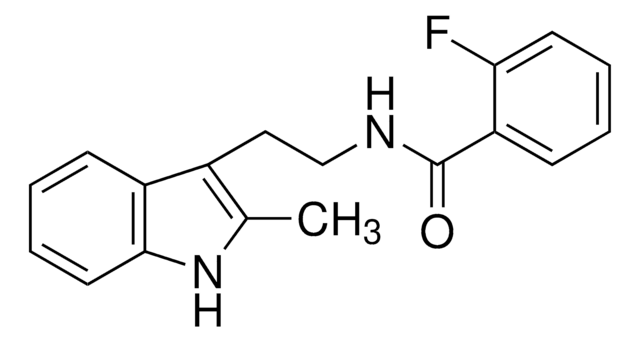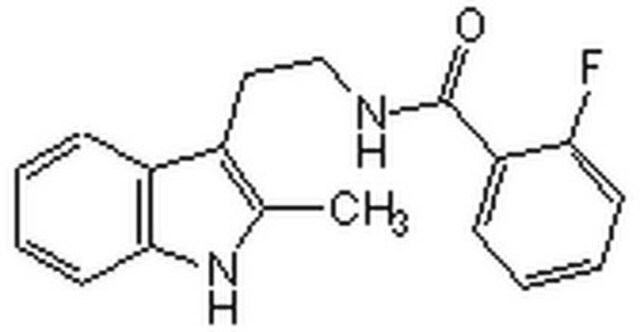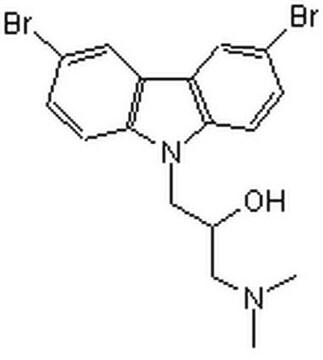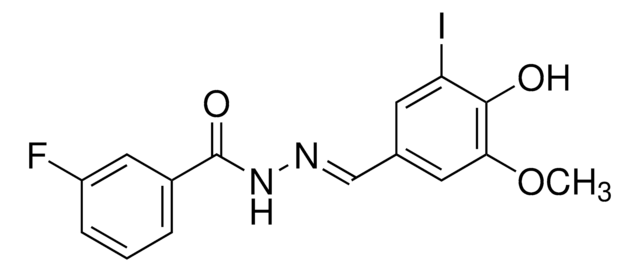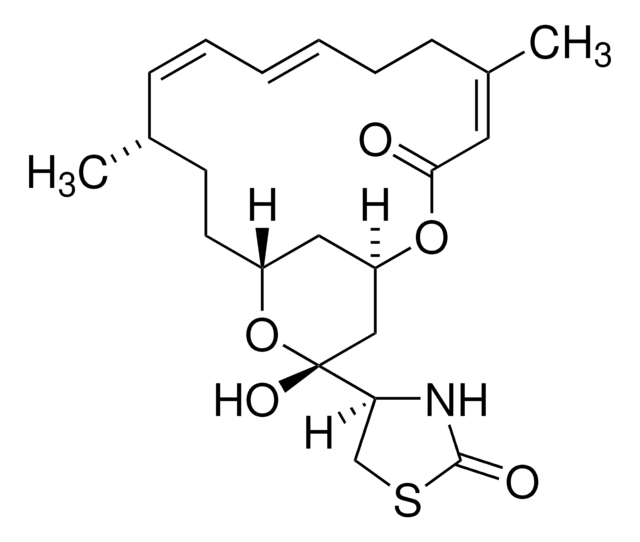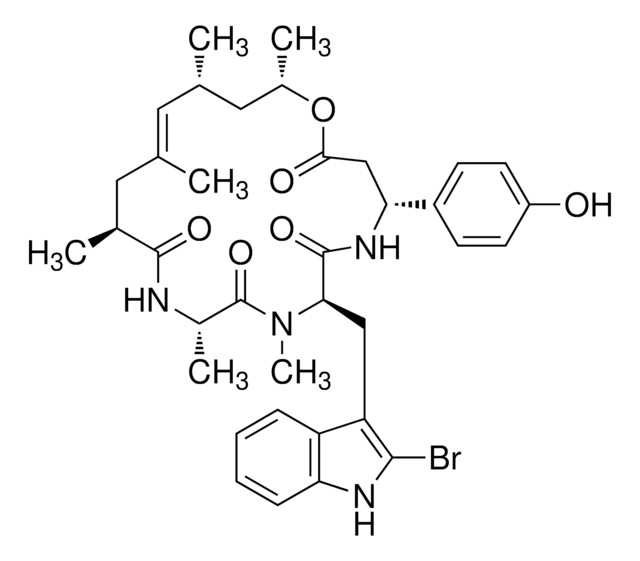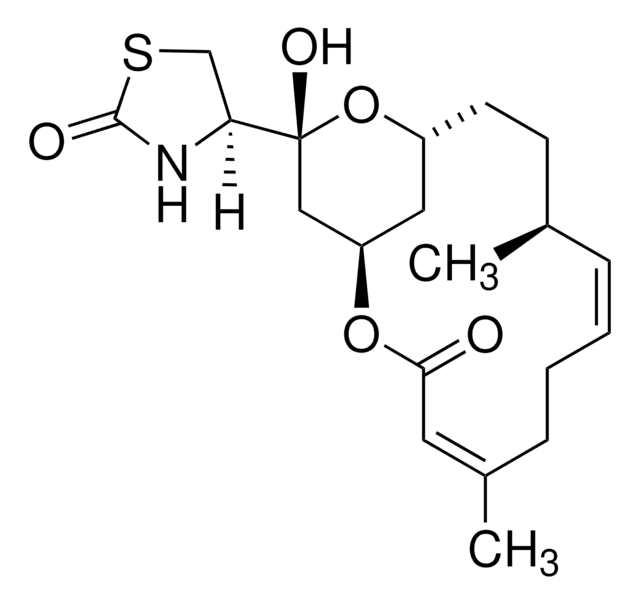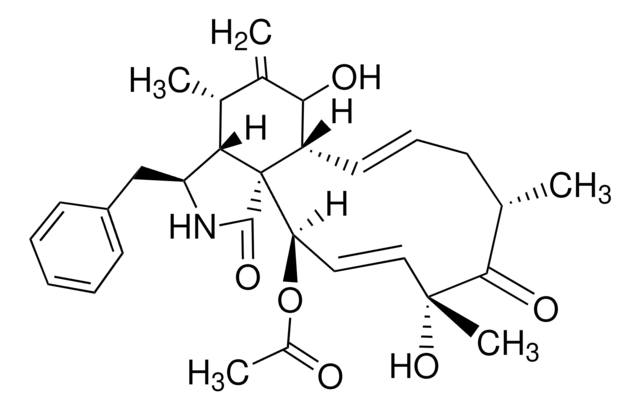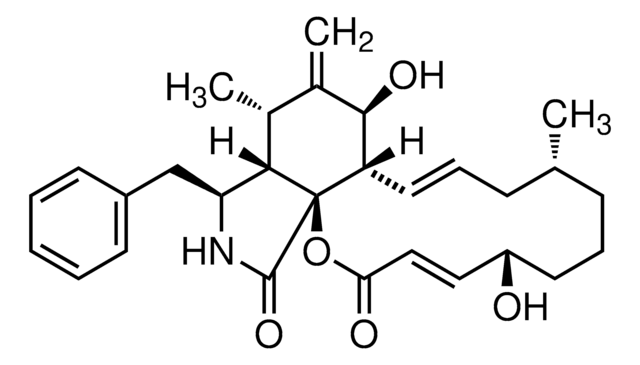W2270
Wiskostatin
Sinonimo/i:
1-(3,6-dibromocarbazol-9-yl)-3-(dimethylamino)propan-2-ol
About This Item
Prodotti consigliati
Saggio
≥98% (HPLC)
Livello qualitativo
Stato
powder
Colore
white to beige
Solubilità
DMSO: 10 mg/mL, clear
Temperatura di conservazione
2-8°C
Stringa SMILE
CN(C)CC(O)Cn1c2ccc(Br)cc2c3cc(Br)ccc13
InChI
1S/C17H18Br2N2O/c1-20(2)9-13(22)10-21-16-5-3-11(18)7-14(16)15-8-12(19)4-6-17(15)21/h3-8,13,22H,9-10H2,1-2H3
XUBJEDZHBUPBKL-UHFFFAOYSA-N
Descrizione generale
Applicazioni
- as a small-molecule inhibitor of Wiskott-Aldrich syndrome protein (WASP) in human osteosarcoma U2OS cells and mouse-tail fibroblast cell lines
- as a neural (N)-WASP inhibitor in cultured neurons and in the human embryonic kidney (HEK293) cells expressing HA-Parkin
- as a neural (N)-WASP inhibitor in dorsal root ganglion (DRG) cells to investigate vascular endothelial growth factor (VEGF) effect on the actin related protein 2/3 complex (Arp 2/3)
Azioni biochim/fisiol
Avvertenze
Danger
Indicazioni di pericolo
Consigli di prudenza
Classi di pericolo
Acute Tox. 3 Oral - Aquatic Chronic 4
Codice della classe di stoccaggio
6.1C - Combustible, acute toxic Cat.3 / toxic compounds or compounds which causing chronic effects
Classe di pericolosità dell'acqua (WGK)
WGK 3
Scegli una delle versioni più recenti:
Certificati d'analisi (COA)
Non trovi la versione di tuo interesse?
Se hai bisogno di una versione specifica, puoi cercare il certificato tramite il numero di lotto.
Possiedi già questo prodotto?
I documenti relativi ai prodotti acquistati recentemente sono disponibili nell’Archivio dei documenti.
I clienti hanno visto anche
Il team dei nostri ricercatori vanta grande esperienza in tutte le aree della ricerca quali Life Science, scienza dei materiali, sintesi chimica, cromatografia, discipline analitiche, ecc..
Contatta l'Assistenza Tecnica.